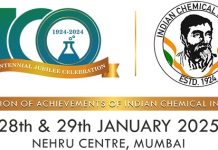Researchers at the Indian Institute of Science Education and Research (IISER) Tirupati have pioneered a novel approach to efficiently produce hydrogen gas from a blend of methanol and paraformaldehyde.
The method, which operates under mild conditions, marks a significant leap forward in the quest for a hydrogen economy. It offers promising prospects for alternative energy sources and chemical synthesis, especially given the rapid depletion of fossil fuels and the urgent need for sustainable and renewable energy options.
Hydrogen gas generation is vital as it holds the potential to replace fossil fuels in various domains, including energy storage, transportation, and diverse chemical applications. Methanol and paraformaldehyde, both widely produced, have emerged as promising hydrogen carriers due to their abundance and extensive production, providing substantial benefits over free hydrogen for storage and transport.
Under the guidance of Professor Ekambaram Balaraman, the researchers have developed a method to generate hydrogen from methanol and paraformaldehyde using readily available nickel catalysts, without requiring bases or activators.
This efficient catalytic system has demonstrated remarkable performance under mild conditions, and the produced hydrogen was successfully employed in chemo- and stereo-selective partial transfer hydrogenation of alkynes. The process has enabled the synthesis of bioactive molecules with added value.
Supported by the ANRF (formerly SERB, a statutory body under the Department of Science and Technology (DST)), the research has been accepted for publication in the journal Catalysis Science & Technology.
The study paves the way for COx-free hydrogen generation, propelling the ‘Hydrogen economy’ forward. As reported by pib.gov.in, utilizing methanol and paraformaldehyde as hydrogen carriers presents a significant potential solution to the growing global energy demands, marking a crucial milestone in the pursuit of sustainable energy solutions.































